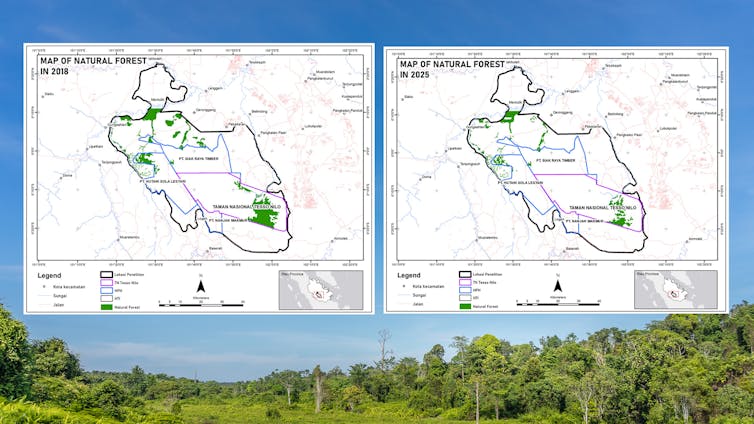Malaysian Ringgit in the Global Market: An Overview from Octa
- Written by Octa
Malaysia's central bank, Bank Negara Malaysia (BNM), has adopted a flexible exchange rate regime for the ringgit, meaning that MYR's exchange rate is determined primarily by the supply and demand for the currency. In turn, the supply and demand depend on a number of factors, both domestic and global. Below, we have listed the main factors impacting the country's exchange rate, and we will describe each of them in relation to the Malaysian ringgit.
Domestic economy Needless to say, a strong market economy is good for any currency. If gross domestic product (GDP) is expanding at a healthy rate, foreign direct investment (FDI) is likely to increase, driving the demand for the local currency higher. In addition, a booming economy is usually associated with increased consumer spending, which often spurs inflation. In turn, that may prompt the central bank to raise borrowing costs, which may potentially make the local currency more attractive vs its regional peers (at least in the short term).
Malaysia's economy has been doing rather well lately. Thanks to strong household spending, exports, and investment, the country's GDP expanded at an impressive 5.9% rate in Q2 2024, the fastest pace in 18 months. BNM is forecasting full-year growth near the upper end of its forecast range. In fact, Malaysia's economy is likely to outperform its closest neighbours, including China, Singapore, Thailand, and Indonesia.
Current Account and Trade Balance Current account is a country's balance of payments. It records all the external economic transactions, the most important of which is international trade. If a country attracts solid capital inflows and exports more than imports, its current account would likely be in surplus. Conversely, a country would be running a current account deficit if more money is leaving the country either by means of imports or via direct capital flight.
According to the Department of Statistics of the Ministry of Economy, Malaysia has mostly enjoyed a positive current account balance (see the infographics below). The country remains a major foreign direct investment (FDI) destination, reaching RM9.1 billion in Q2. However, the balance of trade has been deteriorating lately. On an annual basis, imports have been growing faster than exports for almost a year now. As a result, Malaysia's trade surplus has shrunk from around RM29 billion in June 2023 to just RM6.4 billion in July 2024 (see the chart below), which was below the RM12.3 billion that the market expected. Still, USDMYR has managed to appreciate against this ostensibly negative backdrop. And that is because two other factors played a much bigger role in driving USDMYR down.
Domestic monetary policy BNM has been pursuing a cautious but prudent monetary policy. It hiked its base rate to 3.00% in May 2023 and has kept it steady ever since—even though the inflation rate has slowed to just 2.0%. Furthermore, Malaysia's government and BNM have implemented coordinated measures to increase flows into the forex market to ensure the ringgit remains stable. Specifically, the authorities were working with state-linked companies to encourage them to repatriate and convert their foreign investment income more regularly. Their efforts also included stepping up engagements with international investors to minimise devaluation pressure on the ringgit. Their politics have certainly paid off.
U.S. monetary policy and market sentiment Last but not least, as an emerging market currency, MYR is very sensitive to risk trends, changes in commodity prices, and the value of the U.S. Dollar, all of which are heavily influenced by the U.S. Federal Reserve's (Fed) monetary policy. Over the past several months, investors have been getting more and more optimistic about the prospect of interest rate reductions in the U.S. As a result, the U.S. Dollar Index (DXY) has been trending lower, supporting both commodity prices and emerging markets' currencies. The Malaysian ringgit has certainly benefited from this trend.
Outlook “I believe Malaysian ringgit is poised for continuing appreciation, targeting the 4.250–4.200 level. BNM is worried that inflation may return if the government continues to pursue subsidy cuts, so it is likely to keep interest rates unchanged in the mid-term. At the same time, Jerome Powell has essentially confirmed that the U.S. central bank is embarking on a major rate-cutting cycle”, said Kar Yong Ang, Octa analyst. Meanwhile, looser monetary policy in the U.S. and other major economies may help prop up global demand and pull the prices for Malaysia's key export items higher: specifically, on petroleum products, liquified natural gas (LNG), and palm oil. This, in turn, should improve the balance of trade and add to the current account surplus, supporting the Malaysian ringgit and pushing the USDMYR pair down.
Hashtag: #Octa
The issuer is solely responsible for the content of this announcement.
References
- ^ Media OutReach Newswire (www.media-outreach.com)
Authors: Octa
Read more https://www.media-outreach.com/news/malaysia/2024/09/04/323899/





